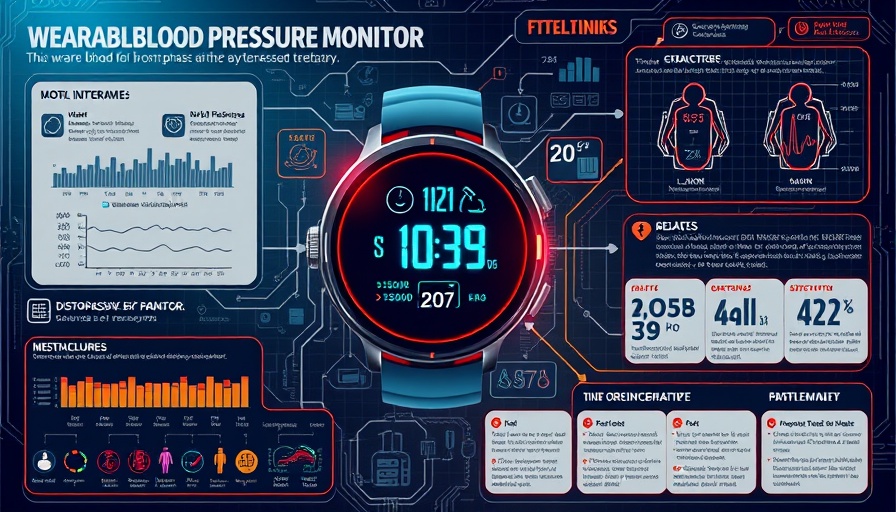
The Next Generation of Blood Pressure Monitoring
In a groundbreaking development, researchers from Seoul National University have unveiled a wearable blood pressure monitor designed to attach to the skin like a bandage. This innovative device allows for real-time continuous monitoring, addressing a critical issue faced by the 1.3 billion people globally diagnosed with hypertension. Current methods of blood pressure measurement, predominantly through cuff-based monitors, only offer a snapshot of a person's blood pressure at a given moment, leaving patients without a comprehensive understanding of their condition.
Why Real-Time Monitoring Matters
Significantly, only 21% of individuals with hypertension effectively manage their condition, which poses serious health risks. Traditional blood pressure cuffs can be uncomfortable and inconvenient for everyday use. The newly developed device promises far greater comfort, enabling users to monitor their blood pressure continuously throughout the day without the restrictions of a cuff.
How the Device Works: A Technical Insight
The mechanism behind this wearable technology is particularly fascinating. It operates on the principle that the travel time of electrical signals (from the heart) and mechanical signals (from the pulse) varies depending on the blood pressure level. When blood pressure is elevated, blood is pushed through arteries more quickly, shortening the time gap between the signals detected at the wrist. Conversely, when blood pressure is lower, this gap lengthens. This fundamental principle allows the device to monitor blood pressure in real-time, providing constant feedback to users.
The Implications for Cardiovascular Health
The implications of this technology are significant for cardiovascular health management. Continuous tracking of blood pressure can facilitate early detection and intervention, reducing the likelihood of severe health complications associated with hypertension, such as heart attacks and strokes. Furthermore, the device could serve as a valuable tool for healthcare providers, offering data that could refine treatment plans and improve patient outcomes.
Addressing Common Concerns with Wearable Tech
While the benefits are clear, wearables often raise concerns about accuracy and usability. However, due to its design, this electronic patch is not only comfortable but is also less prone to measurement inaccuracies that plague traditional cuff monitors—such as those caused by improper positioning or anxiety during measurement. With an intuitive application for smartphones, users can easily track their readings, ensuring that important health data is just a glance away.
Future Research and Developments
This technology opens the door to a plethora of future research and development opportunities. As researchers continue to refine this blood pressure monitoring method, the potential for integrating additional health metrics—such as heart rate and oxygen saturation—could transform how individuals approach personal health management. The goal is to create an all-in-one device that promotes better health monitoring in a non-invasive and user-friendly manner.
Final Thoughts: Embracing Innovation in Health Tech
The rise of wearable health technology is an exciting frontier in medical innovation. With devices like the bandage-like blood pressure monitor, individuals can take proactive steps toward managing their health. As these technologies evolve, the potential for enhanced data-driven healthcare approaches will be crucial in tackling the global hypertension epidemic.
If your health matters to you, consider exploring new technologies available for continuous monitoring. Embracing innovation can empower you to take charge of your health effectively and comfortably.
 Add Row
Add Row  Add
Add 




Write A Comment